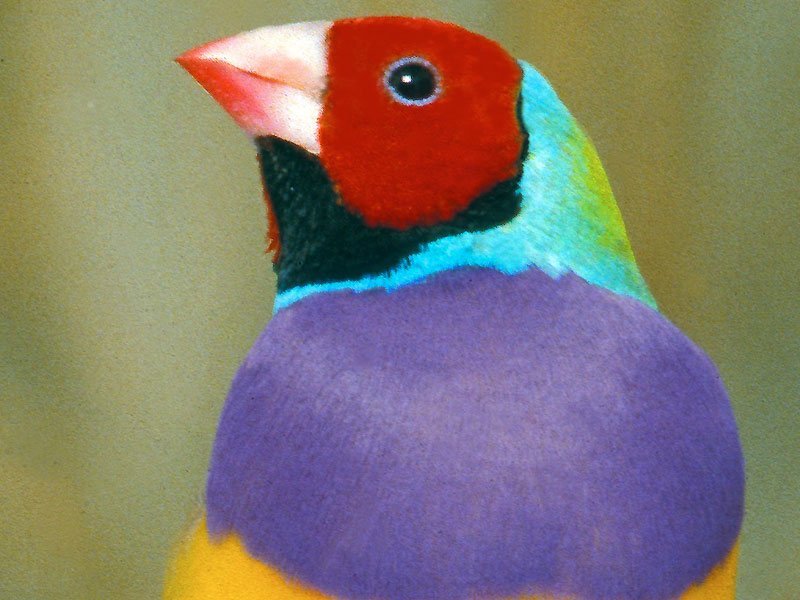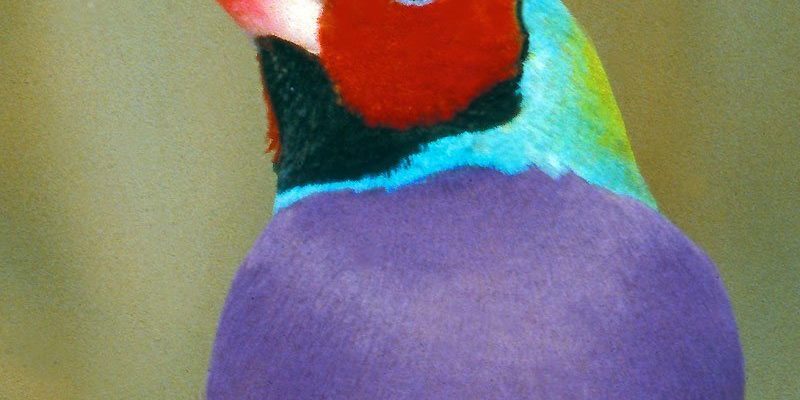
Many people are familiar with the term “endangered,” but what does it really mean when we talk about the Gouldian Finch? Are these dazzling birds on the brink of disappearing, or is there still hope for their future? Let’s dive in and explore the status of the Gouldian Finch, the challenges they face, and what we can do to help them thrive.
What Is the Gouldian Finch?
The Gouldian Finch, also known as *Erythrura gouldiae*, is a small bird native to Australia. Its striking colors—rich greens, vibrant yellows, and deep reds—make it one of the most sought-after species among bird enthusiasts. They usually live in small flocks, often found in open forests and grasslands.
It’s important to remember that these birds thrive in specific environments. They prefer areas with plenty of grass seeds, which make up a large part of their diet. Think of them as tiny foragers always on the lookout for their next meal. Sadly, their natural habitats are shrinking, putting pressure on their populations.
Current Conservation Status
You might be asking, “So, what’s the status of the Gouldian Finch?” Currently, the Gouldian Finch is listed as *Endangered* by the International Union for Conservation of Nature (IUCN). This classification means that they face a high risk of extinction in the wild. Factors like habitat loss, fires, and competition with other species contribute to their decline.
The numbers tell a sobering story: In recent years, populations have dwindled significantly. Estimates suggest that there are now fewer than 2,500 mature individuals left in the wild. This stark decline has conservationists worried about whether these beautiful birds can survive in the long term.
Why Are Gouldian Finches Threatened?
Several factors contribute to the threatened status of the Gouldian Finch. Understanding these issues is key to figuring out how we can help.
1. Habitat Loss: As Australia develops, more forests and grasslands are being turned into urban areas or agricultural land. This loss of habitat means less food and fewer nesting sites for the finches.
2. Climate Change: Changes in weather patterns can affect the availability of food. Droughts can lead to fewer seeds, directly impacting the birds’ survival.
3. Competition: Other species, such as the common finch, have been moving into the Gouldian Finch’s territory, competing for the same resources.
What Are Conservation Efforts Doing?
Here’s the thing: people aren’t just sitting back and watching the Gouldian Finch disappear. Various conservation programs are stepping up to make a difference. Organizations are working tirelessly to protect and restore their habitats. Here’s how they’re doing it:
– Habitat Restoration: Efforts are underway to restore natural habitats that have been damaged. By planting native grasses and trees, conservationists are creating a more welcoming environment for the finches.
– Captive Breeding: Some programs focus on breeding Gouldian Finches in captivity to release them back into the wild. This helps boost the population and diversify genetic lines.
– Public Awareness: Educating communities about the importance of these birds encourages people to get involved in conservation efforts. Local workshops, school programs, and social media campaigns help spread the message.
How Can You Help the Gouldian Finch?
You might wonder what you can do to help these stunning birds thrive. It doesn’t have to be complicated! Here are some simple actions you can take:
1. Support Conservation Organizations: Look for local or national groups focused on bird conservation. Donating, volunteering, or even just spreading the word can make a big difference.
2. Create Bird-Friendly Spaces: If you have a garden, consider planting native plants that can provide food and shelter for birds, including the Gouldian Finch.
3. Spread Awareness: Talk about the Gouldian Finch and share information with friends and family. The more people know, the better chance these birds have for survival.
Comparing the Gouldian Finch with Other Finches
It’s easy to see why the Gouldian Finch is so beloved, but how does it stack up against other finches? For example, the Zebra Finch is another popular species, often found in pet stores. While both types are charming, there are some key differences:
– Coloration: The Gouldian Finch has more vibrant colors and patterns than the Zebra Finch, which typically has a more muted palette.
– Habitat Preferences: While both thrive in Australia, the Gouldian Finch prefers grassy habitats, whereas the Zebra Finch adapts well to a variety of environments.
– Social Behavior: Gouldian Finches are often seen in larger flocks, while Zebra Finches may be more solitary or form smaller groups.
The future of the Gouldian Finch hangs in the balance. With concerted conservation efforts, there’s still hope for these beautiful birds. By understanding the challenges they face and taking action, we can help ensure that future generations enjoy their colorful company.
This isn’t just about saving a species; it’s about preserving a slice of the natural world that adds beauty and diversity to our planet. The Gouldian Finch is a reminder of how interconnected we all are, and it shows just how much our actions matter. So, let’s work together to protect them, one step at a time!

